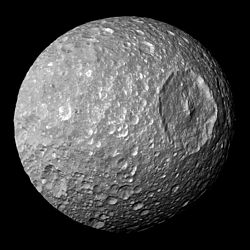Roundness of Cosmic Bodies
© Science Adminsthe ionization in the core [of a cosmic body] allows it to flow like a liquid, because the valence electrons responsible for the rigid crystal structure are missing. The fluidity under pressure results in a spherical shape. The minimum radius for spherical shapes in celestial objects is roughly 750 km — everything bigger than that is spherical, and everything smaller than that is irregular. So that's the point at which the ionization becomes sufficient for fluidity in the core.I thought the minimum radius for spherical cosmic bodies was under 200 miles = 320 km.I had previously assumed that at the minimum radius gravity was strong enough to crush everything into powder in the inner regions. But the idea that it ionizes that material and forms CFDLs, or current-free double-layers, sounds good too. Maybe it first crushes rock to powder and at greater radius it starts to ionize the core and form CFDLs. If so, I suppose there may be surface features that could tell us the difference.
Rhea
Saturn V764.1 smallest known body in current HE Iapetus
Saturn VIII735.6 largest known object not in current HE I'll research this, and see if I can't figure out what I'm actually saying here.Ultimately, these numbers could be cross-referenced with the depth at which plasticity is achieved inside the Earth. The distance is a lot less than 750 km, and more like 40~70 km (i.e., the bottom of the lithosphere). But the gravity, and thus the pressure, should be the same.Charles, who are you gonna believe, Wikipedia or your lying eyes?
Here's Mimas at 396 km diameter, not radius, and Miranda at 472 km.

[Close-up view of Verona Rupes, a 20 km high fault scarp on Miranda, a moon of Uranus.]
Here are the dimensions of some moons of Saturn. Note that even Earth is 12,714 km x 12,756 km with ratio of .997. I added the ratios to this list of moon dimensions.
Tethys Enceladus Mimas 418 x 392 x 382 km = .914
Hyperion Phoebe Janus Epimetheus












